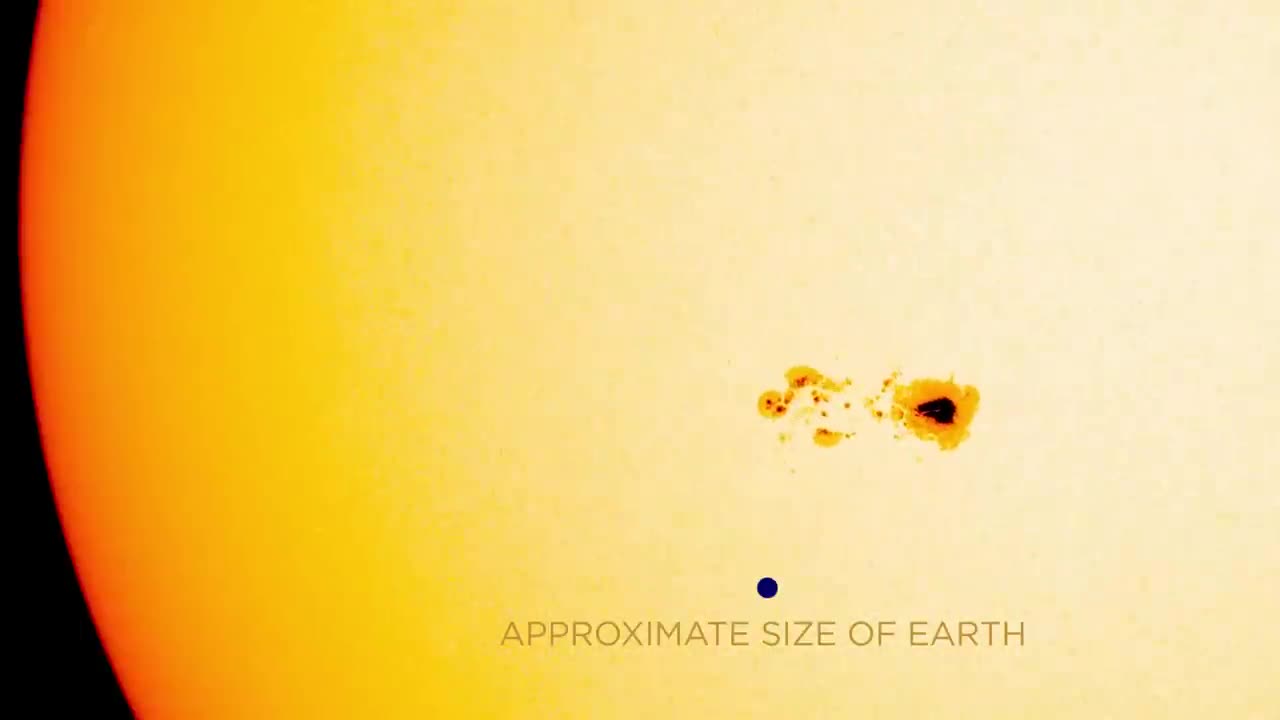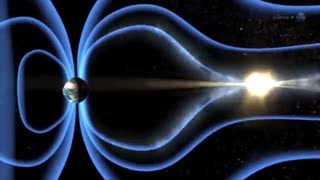Premium Only Content

NASA’s SDO Watches a Sunspot Turn Toward Earth
NASA’s SDO Watches a Sunspot Turn Toward Earth
An active region on the sun — an area of intense and complex magnetic fields — has rotated into view on the sun and seems to be growing rather quickly in this video captured by NASA’s Solar Dynamics Observatory. Such sunspots are a common occurrence on the sun, but are less frequent as we head toward solar minimum, which is the period of low solar activity during its regular approximately 11-year cycle. This sunspot is the first to appear after the sun was spotless for two days, and it is the only sunspot group at this moment. Like freckles on the face of the sun, they appear to be small features, but size is relative: The dark core of this sunspot is actually larger than Earth.
Sunspots are temporary spots on the Sun's surface that are darker than the surrounding area. They are regions of reduced surface temperature caused by concentrations of magnetic flux that inhibit convection. Sunspots appear within active regions, usually in pairs of opposite magnetic polarity. Their number varies according to the approximately 11-year solar cycle
Individual sunspots or groups of sunspots may last anywhere from a few days to a few months, but eventually decay. Sunspots expand and contract as they move across the surface of the Sun, with diameters ranging from 16 km (10 mi)[3] to 160,000 km (100,000 mi). Larger sunspots can be visible from Earth without the aid of a telescope. They may travel at relative speeds, or proper motions, of a few hundred meters per second when they first emerge.
-
 3:53
3:53
Outer Space
2 months agoHidden Magnetic Portals Around Earth
3272 -
 LIVE
LIVE
Colion Noir
1 hour agoDid the SIG P320 Just Kill a U.S. Airman Without Anyone Pulling the Trigger?
2,262 watching -
 LIVE
LIVE
LumpyPotatoX2
5 hours agoKilling Floor 3 + SoulFrame: Co-op Showcase - #RumbleGaming
5,528 watching -
 2:10:50
2:10:50
vivafrei
6 hours agoEp. 274: Canada's War on Christianity! Is Candace Owens Cooked? SCOTUS, RFK Jr. AND MORE!
49.6K80 -
 38:09
38:09
The Mel K Show
3 hours agoMel K & Tim James | Are Hidden Dangers Lurking in Your Mouth? | 7-27-25
14.1K2 -
 LIVE
LIVE
PudgeTV
1 day ago🟠 Gaming on Rumble | Soulframe Early Access Gaming Showcase
139 watching -
 LIVE
LIVE
ttvglamourx
4 hours ago $0.55 earnedSearching To Destroy !DISCORD
173 watching -
 LIVE
LIVE
itsReel
2 hours agoGaming SUNDAY
84 watching -
 28:43
28:43
Liberty Hangout
3 days agoAnti-Trumpers Don't Know What They're Protesting
39.6K227 -
 20:33
20:33
Sideserf Cake Studio
1 day ago $3.73 earnedI Built A Bikini Bottom Fish Tank CAKE!
33.8K11